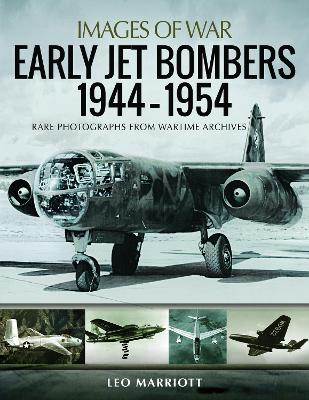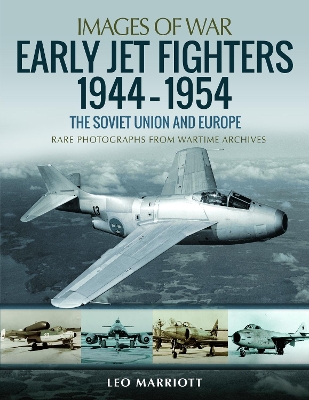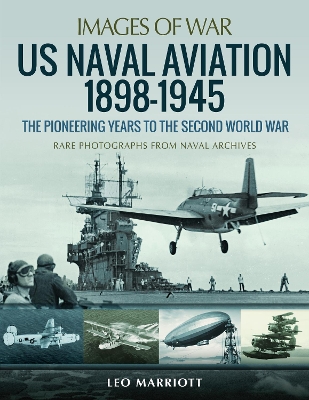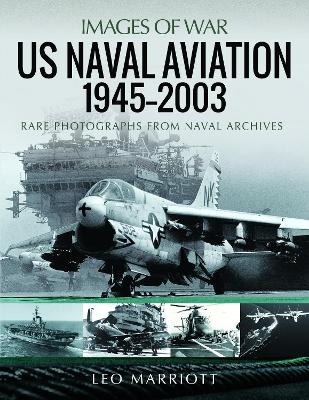Images of War
5 total works
In a companion volume to his Early Jet Fighters: British and American 1944-1954, Leo Marriott describes, using over 200 archive photographs, the first decade in the development of the jet bomber. This was a time of intense technical innovation which transformed the design and capabilities of the bomber and gave birth to a range of classic military aircraft in the USA, Great Britain, France and the Soviet Union. The photographs take the story from the earliest jet bombers constructed in Germany towards the end of the Second World War to the successful designs both sides depended on through the first phase of the Cold War.
The pace of development was rapid and remarkable, from initial prototypes built in Germany - the Arado 234 and the Junkers Ju. 287 - to the fleets of advanced jet bombers like the British Canberra and V-bombers, the American B-47 and B-52 and the Soviet Il-28 Beagle and Tu-16 Badger. The images of the prototypes give a fascinating insight into the extraordinary technical challenges and the ambition and inventiveness of the designers and manufacturers who overcame them.
Leo Marriott's vivid selection of photographs and his lucid historical narrative offer the reader an overview of a dynamic stage in the evolution of the design of military aircraft.
The pace of development was rapid and remarkable, from initial prototypes built in Germany - the Arado 234 and the Junkers Ju. 287 - to the fleets of advanced jet bombers like the British Canberra and V-bombers, the American B-47 and B-52 and the Soviet Il-28 Beagle and Tu-16 Badger. The images of the prototypes give a fascinating insight into the extraordinary technical challenges and the ambition and inventiveness of the designers and manufacturers who overcame them.
Leo Marriott's vivid selection of photographs and his lucid historical narrative offer the reader an overview of a dynamic stage in the evolution of the design of military aircraft.
In his previous book on early jet fighters Leo Marriott traced the history of the revolutionary aircraft produced by the British and Americans immediately after the Second World War; in this companion volume he describes jet fighter development on the continent of Europe and in the Soviet Union during the same remarkable period. Using over 200 archive photographs he covers the pioneering German designs, then the range of experimental and operational fighters constructed by the Soviets, the French and the Swedes. The sheer variety of the designs that manufacturers came up with during this short, intense period of innovation mean that the book is fascinating reading.
Several of the most famous jet fighters feature prominently in the rare photographs and are analysed in the expert text, including the Messerschmitt Me 262, the Heinkel He 162, the MiGs 15, 17 and 19, the Dassault Ouragan and the Saab J29. But perhaps the most rewarding aspect of the book is its record of experimental projects which tested new concepts that rapidly became established elements of jet aircraft design. The photographs of these largely forgotten aircraft give us an insight into the extraordinary technical challenges and the ambition and inventiveness of the designers and manufacturers who overcame them.
Several of the most famous jet fighters feature prominently in the rare photographs and are analysed in the expert text, including the Messerschmitt Me 262, the Heinkel He 162, the MiGs 15, 17 and 19, the Dassault Ouragan and the Saab J29. But perhaps the most rewarding aspect of the book is its record of experimental projects which tested new concepts that rapidly became established elements of jet aircraft design. The photographs of these largely forgotten aircraft give us an insight into the extraordinary technical challenges and the ambition and inventiveness of the designers and manufacturers who overcame them.
US Naval Aviation 1898-1945: The Pioneering Years to the Second World War
by Leo Marriott
Published 15 April 2021
The Japanese attack on Pearl Harbor on 7 December 1941 sank or crippled almost all of the battleships belonging to the US Navy's Pacific Fleet, but the fleet's aircraft carriers survived to demonstrate that naval aviation was now the dominant factor in the struggle at sea, turning the tide of the Pacific War. That the US Navy had the necessary ships, aircraft and crews was the result of pioneering, far-sighted decisions made in the pre-war years. Before the First World War the navy had recognised the potential of aircraft at sea, and it went on to develop the techniques and equipment that contributed so much to the defeat of the Japanese. This is the fascinating story Leo Marriott tells in this photographic history.
In a selection of over 200 rare photographs he traces the growth of US naval aviation from the flimsy seaplanes of the first years of the twentieth century to the mighty armadas that challenged those of the Japanese and, after the carrier battles at Coral Sea and Midway, led the advance across the Pacific. Key aspects of the history are the navy's first aircraft carriers of the 1920s and the tremendous progress made in the decades between the wars in tactics and strategy as well as in the design of ships and aircraft.
In a selection of over 200 rare photographs he traces the growth of US naval aviation from the flimsy seaplanes of the first years of the twentieth century to the mighty armadas that challenged those of the Japanese and, after the carrier battles at Coral Sea and Midway, led the advance across the Pacific. Key aspects of the history are the navy's first aircraft carriers of the 1920s and the tremendous progress made in the decades between the wars in tactics and strategy as well as in the design of ships and aircraft.
In this the highly illustrated second volume of his history of US naval aviation, Leo Marriott takes the�reader through the extraordinary developments in design and capability that transformed American�aircraft and aircraft carriers after the Second World War, and he describes the succession of conflicts in which they were deployed. Increasingly, advanced jets replaced propeller-driven aircraft and nuclearpowered�carriers allowed the US Navy to project American military power across the world. As the many�remarkable photographs in this book show, wherever naval aviation was involved, it played a crucial role,�especially in the wars in Korea and Vietnam.
The vessels built in the 1940s to fight in the war against Japan gave way to a new generation of super�carriers. Supersonic fighters and strike aircraft entered service - the F-8 Crusaders and F-4 Phantoms of�the Vietnam era, then the F-14 Tomcat, F/A-18 Hornet and S-3 Viking of more recent times. Carrier-based�helicopters became more important, first for search-and-rescue missions, then for anti-submarine warfare�and for landing assault forces. Throughout this period of the Cold War the US Navy's carriers and aviation�served to demonstrate American power worldwide and to counter the threat represented by the Soviet�Union's challenge to US mastery of the seas.
The vessels built in the 1940s to fight in the war against Japan gave way to a new generation of super�carriers. Supersonic fighters and strike aircraft entered service - the F-8 Crusaders and F-4 Phantoms of�the Vietnam era, then the F-14 Tomcat, F/A-18 Hornet and S-3 Viking of more recent times. Carrier-based�helicopters became more important, first for search-and-rescue missions, then for anti-submarine warfare�and for landing assault forces. Throughout this period of the Cold War the US Navy's carriers and aviation�served to demonstrate American power worldwide and to counter the threat represented by the Soviet�Union's challenge to US mastery of the seas.




